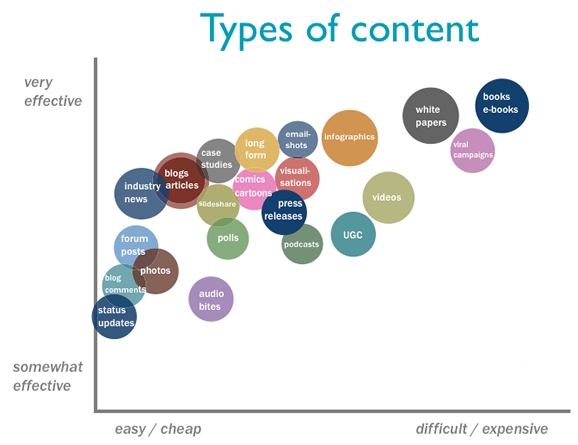
So you've decided to start your own digital marketing strategy. What's next? Well, this article will walk you through the various steps of the process, from choosing your channel to researching your audience. This article will help you create a customer journey, and how to split test your strategy. This will allow you to see if your new strategy works for your brand. If your strategy is not working, you are not the only one. There are many other businesses who have had the same question: "How do I start a digital marketing strategy?"
Researching your audience
In creating a digital marketing strategy, research your audience to better understand their needs. You can do this through quantitative research, which involves surveying a large population and generating statistical results. If you are looking to create an email campaign that targets a particular audience, for example, you will need to identify their pain points and interests. You can also review their purchase history to determine if they have changed their purchasing habits. Then, you can target your marketing message to the specific audience segments.
Understanding your audience is key to creating a successful digital marketing plan. You won't be able to see their needs and desires without research. Research can help identify those needs and tailor content to them. By doing research, you'll also be able to predict their needs and become more effective in your marketing. These are some tips to help you research your audience.
Interviews: Conducting surveys can help you understand your audience better. Emailing existing customers is a great way to get feedback from them and conducting interviews. These surveys can provide valuable insight into what your audience is like. This information will help you to create your digital marketing strategy. It is important to research the audience. However, it is also crucial to create a compelling digital marketing campaign. This will help you engage your audience, and increase sales.
Segmentation - By understanding your audience's lifestyle, interests and preferences, you can tailor the messaging to them. Segmentation will allow you to craft a stronger message and interact with your customers in a more personal way. Adidas sent a specific email targeting women, while the clothing manufacturer categorised its customers by gender. Customers tend to buy jeans, and so a survey asking them for their opinions on the retailer would return an average score 8/10.
Choose your channels
Your product or service promotion will be enhanced by digital marketing channels. Your choice should depend on your primary objectives, target audience, competition and budget. Different channels can produce different results so make sure you choose the right channel for you. The types of content you want to share with your audience and the format of your ads will depend on which channels you use. Content marketing is still the king of marketing and will always be relevant, but if you want to reach your audience, there is no doubt that you must take advantage of this technology.

The goals of your company will determine the decision to use a specific digital marketing channel. You should determine your long-term as well as short-term goals. Your long-term goal might be to increase revenue by 20% within the next two years. While your short-term goal might have you generating 400 sales qualified leads in six months or increasing website traffic to 70% by eight months, a shorter-term goal might be to increase revenue by 20% by 2020. So that you can decide which channels will work best, it is important to clearly identify your short-term (and long-term) goals.
Be sure to evaluate the effectiveness of each channel before making a decision on which channels you will use. Each channel has its strengths, weaknesses, freedoms, and limitations. Identify the type of creative content you will need for each channel, as well as its costs. Before you use new channels in your digital marketing strategy, make sure that you have enough budget. You should use Twitter or Facebook to generate buzz.
A customer journey
One of the most important elements of a successful digital marketing strategy is a customer journey map. These maps are a visual representation of the customer journey, from making a decision to take action. The customer experience map can be used in many ways. It can show the customer's journey through the sales funnel, up to the point where they become a loyal customer. You can also use the customer journey map to identify areas for improvement.
A customer journey map, in a nutshell is the prospect's journey towards purchase. It assists marketers in mapping out the questions and pain points that they encounter as they go. The higher-funnel stages are aimed at creating awareness and interest, while the final stages are devoted to fostering brand loyalty. This begins with awareness. You can achieve this through social media, word-of-mouth, search engine suggestions or blogs.
After researching and learning about a brand, potential customers begin the information-gathering phase of the customer journey. Initially, they don't know who you are, but they know what they want. In this phase of the Customer Journey, the brand should have content that helps customers make an informed decision. In addition to this, brands can offer a free trial period to customers to eliminate any final obstacles in their purchasing process.
By understanding the customer journey map, marketers can target their advertising efforts. Each stage of a customer journey should be identified as a buyer persona. Marketers will be able to adjust their marketing campaigns based on the stage's goals by knowing this information. A customer journey map can also help marketers better understand their target audience by identifying what motivates each stage of the customer's decision-making process.
Split testing your strategy
Split testing can be used to improve the profitability of your digital marketing strategy. Some of these areas include headlines, page copy, button text, images, social sharing buttons, email marketing, and call to actions. Below are some possible scenarios. Split testing can be used to determine which marketing strategies will lead to increased sales and profitability. Use the right sample size. Split testing should not be done less than once a month and should have a high confidence rating.
Split testing helps you identify which marketing strategies are performing well and where you need to make improvements to maximize their effectiveness. Split testing helps you monitor whether your online marketing strategy generates leads and brings in returns. Split testing involves experimenting with different versions of a website, or individual elements of it. Using the results of the split tests, you can determine if your website is making money or not. Once you've identified which variants generate more leads, it is possible to make adjustments in your digital marketing strategy.

To get ideas for split tests, use the ClickFunnels ad library, which allows you to test 6 different versions of one advertisement. Facebook is another good place to look for split testing ideas. Facebook provides many examples and you can easily copy these ads to see which ones are doing well. Split testing is also possible on landing pages. Split tests can be conducted on landing pages. For instance, moving your CTA under the fold increased conversions 304% while removing it from the landing webpage caused cart abandonment rates down 33%.
Split testing is an important part of conversion optimization. Splitting traffic into two groups is what splits it. Split testing means that you split traffic so 50% of the traffic sees the control variant and half the variant version. Splitting traffic into equal segments is used to show the variant version to each segment in a multivariate experiment. Split testing can improve your digital marketing strategy, and you'll be amazed at the results!
Measuring its success
Measuring the results of your digital marketing strategy is a key step in creating a successful one. You can do this through a number of ways, including monitoring the number of visitors who have converted into buyers. Other metrics can be used to measure the effectiveness of a campaign, such as the number of pages viewed. These metrics can help you determine the success or failure of a campaign depending on your target audience and to evaluate the effectiveness of an individual marketing initiative.
In order to measure the success of a digital strategy, it is important to monitor key performance indicators (KPIs), in order for you evaluate the effectiveness of your campaigns. KPIs are quantifiable metrics that track how your marketing team performs against a specific goal or objective. These goals can be either high or low level. These KPIs are useful in identifying the success of a campaign, as they provide a specific level of accuracy that can be used as a guide for future campaigns.
It is essential to establish clear goals for measuring your digital advertising strategy. To illustrate, how many people did your website attract? Was your website encouraging purchase? Are your email marketing campaigns generating more business? Are you getting new business? What proportion of your visitors bought after you sent an email? These are just a few examples of what you need to track to determine whether your digital marketing strategy is working. It will ultimately all come down to your goals and objectives as well your digital marketing strategy.
FAQ
SEO: Is link building still relevant?
Link building will always remain essential. But how you approach it today is different than how others did it 10 or 20 years ago. The biggest challenge for any business today is how they find customers and make sales. Search engine optimization helps with this.
Social media has become a key tool for businesses. Content marketing strategies have also become very important. Google penalizes websites with too much backlinks, so link building seems less effective. This is understandable as if you are linking to many sites, it's likely that your site has nothing unique worth looking at.
All these factors mean that link building isn't nearly as valuable for ranking your website as it once was.
How do I create an SEO Strategy?
Understanding your goals and how you plan to achieve them is the first step in developing an SEO strategy. This will allow you to organize your content around these goals.
The second step in the process is to work on your keywords. By doing keyword research, you'll gain insight into what people are searching for when they use certain words. This information will allow you to write articles about these topics.
Your target keywords should be included in your articles once you have finished writing them. You should also optimize each article by including relevant images and videos. If possible, you should also link to other related sites.
After writing all your content, you can start optimizing it!
What is On Page SEO?
On-page SEO refers to the actions you take within your website to help it rank higher in search engines. On-page search engine optimization covers things like site architecture, page titles (meta tags), image alt text, and page titles. Off-page optimization refers to any activities outside of your website that can improve its ranking. These activities can include backlinks as well as social media shares and press releases.
Why should I use SEO
There are many reasons you should use SEO.
It helps increase traffic to your site by ensuring that it appears high in search engine results.
A second benefit is the ability to increase conversions. Users can be sure they find what they want when they type in their search bar.
Third, it increases brand awareness by helping customers find your business online.
Fourth, it enhances the user experience and allows them to navigate your website quickly.
Finally, it builds trust among potential customers by showing that you care enough about your business to ensure it ranks well in search engines.
Statistics
- 93%of online experiences today begin on search engines. (marketinginsidergroup.com)
- Deleting those 10k pages is one of the main reasons that he improved his site's organic traffic by nearly 90%: (backlinko.com)
- A 62.60% organic traffic boost to that page: (backlinko.com)
- 64% of marketers actively create SEO campaigns because they help hit multiple key performance indicators (KPIs), including increasing traffic, helping your site rank for relevant keywords, improving your conversion rate, and much more. (semrush.com)
- Which led to a 70.43% boost in search engine traffic compared to the old version of the post: (backlinko.com)
External Links
How To
How do you create your first blog site?
It's simple! WordPress is a wonderful tool to help you create a blog. Users can easily edit the appearance of their blogs by adding themes, changing fonts and colors, and customizing the layout. They can also create plugins that will automatically alter certain aspects of the website according to visitor activity.
WordPress.org offers many templates for free and premium templates that are more expensive. Premium templates come with additional features such as extra pages, extra plugins, and advanced security.
After you have downloaded the template, you will need to sign up to a free hosting account to upload your files to your blog and manage it. Although many hosts offer free accounts with limited space, there are restrictions on the number of domains that you can host, how many emails you may send, and how many websites you can upload.
If you plan to use more domain names, you will also need to purchase separate email addresses. Some hosts charge a monthly fee for this service.
A blog hosted online is a great way to start blogging if it's your first time. Hosting companies offer unlimited storage, so your files won’t be deleted even though you delete them accidentally.
Many hosts permit multiple domain hosting. You can host several sites under one package. You can avoid signing up for multiple email accounts and maintain all your sites through one interface.
Some hosts include social media sharing buttons on their dashboards, allowing visitors to share posts across the internet quickly and easily.
Many hosting providers offer tools that allow you to manage your blog. You can view the performance stats of your website, see how many people visited each post, and compare your traffic with other blogs.
These tools can make managing a blog easier and more effective, so you should look into them before choosing a hosting package.
To sum up:
-
Select a topic that is relevant to your business.
-
Create engaging content;
-
Optimize your site using SEO techniques;
-
Promote your site using social media channels;
-
To make necessary changes, keep an eye on your statistics.
-
Don't forget to update the blog often.
In other words, create quality content, promote it effectively, track its success.